-
 #52. Deep Retinal Fluid: Is it RVO?Archived
#52. Deep Retinal Fluid: Is it RVO?Archived -
 #51. Reflective spots in outer retinaArchived
#51. Reflective spots in outer retinaArchived -
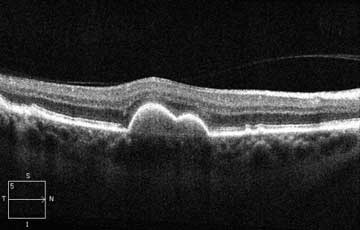 #50. A pigment epithelial detachment (PED) with homogenous materialArchived
#50. A pigment epithelial detachment (PED) with homogenous materialArchived -
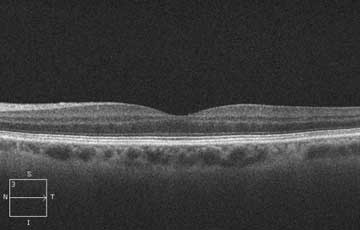 #49. The 3rd Deep LineArchived
#49. The 3rd Deep LineArchived -
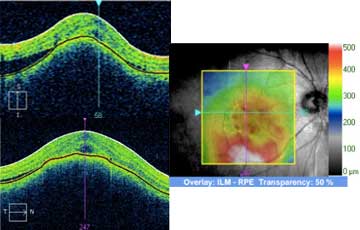 #48. Look at the choriocapillaris in choroidal elevationsArchived
#48. Look at the choriocapillaris in choroidal elevationsArchived -
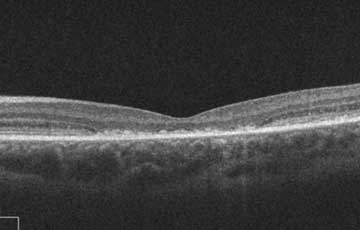 #47. Thin central retina with yellow flecksArchived
#47. Thin central retina with yellow flecksArchived -
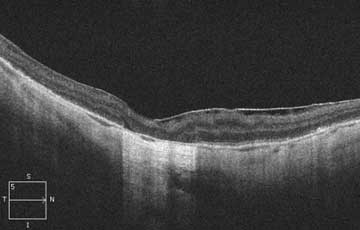 #46. A bright line on the surface of the retinaArchived
#46. A bright line on the surface of the retinaArchived -
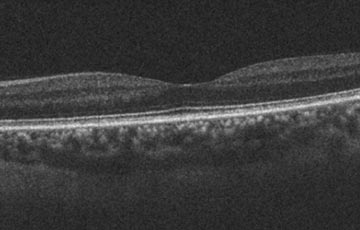 #45. Look at the choroid on each OCT that you interpretArchived
#45. Look at the choroid on each OCT that you interpretArchived -
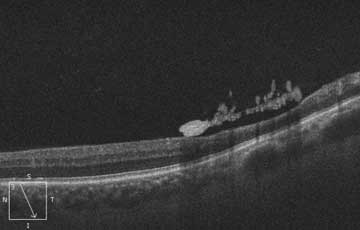 #44. Hyper-reflectivity on surface of retinaArchived
#44. Hyper-reflectivity on surface of retinaArchived -
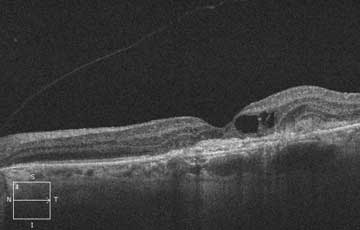 #43. Which eye in the OCT?Archived
#43. Which eye in the OCT?Archived -
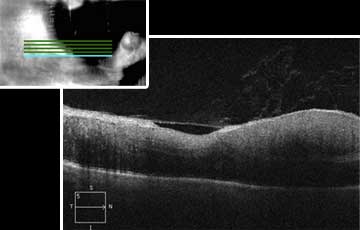 #42. Hyperreflectivity in the vitreousArchived
#42. Hyperreflectivity in the vitreousArchived -
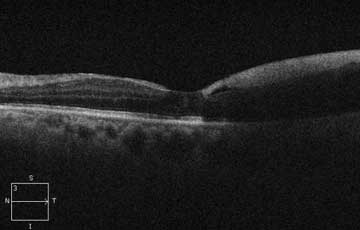 #41. Superficial hyperreflectivity with little deep retinal detailArchived
#41. Superficial hyperreflectivity with little deep retinal detailArchived -
 #40. Bright donuts in inner retinaArchived
#40. Bright donuts in inner retinaArchived -
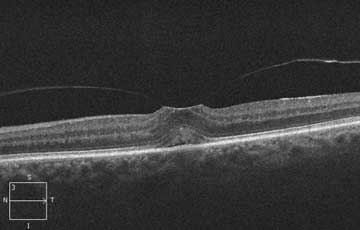 #39. A flat foveal surfaceArchived
#39. A flat foveal surfaceArchived -
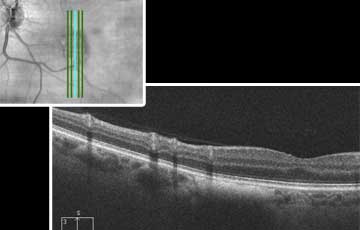 #38. A series of hyperreflectivity lesions in superficial retinaArchived
#38. A series of hyperreflectivity lesions in superficial retinaArchived -
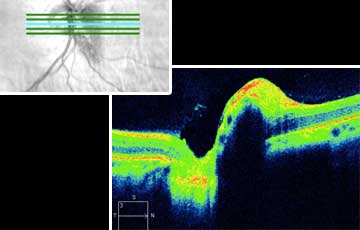 #37. A pigmented lesion near the optic discArchived
#37. A pigmented lesion near the optic discArchived -
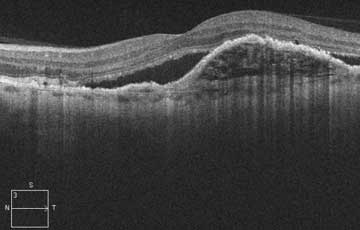 #36. Lamellar bands below the retinal pigment epithelium (RPE)Archived
#36. Lamellar bands below the retinal pigment epithelium (RPE)Archived -
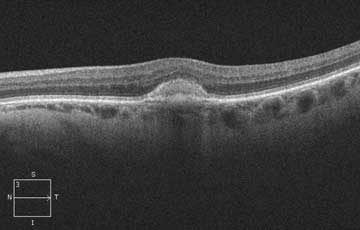 #35. A yellow lesion in the deep retinaArchived
#35. A yellow lesion in the deep retinaArchived -
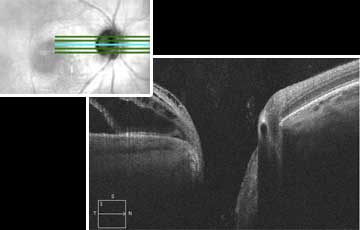 #34. Hole in optic nerveArchived
#34. Hole in optic nerveArchived -
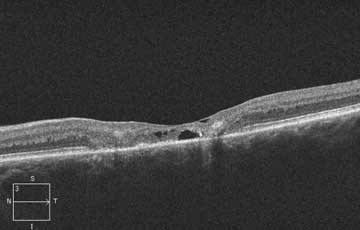 #33. Outer retinal cysts with crystalsArchived
#33. Outer retinal cysts with crystalsArchived -
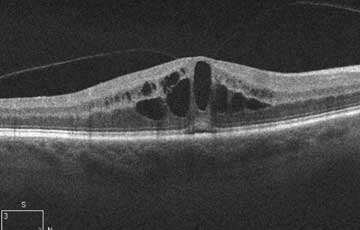 #32. Intraretinal cysts following cataract surgeryArchived
#32. Intraretinal cysts following cataract surgeryArchived -
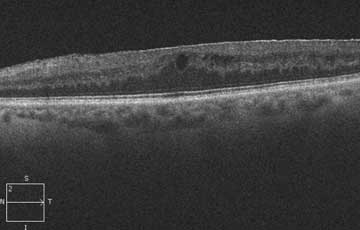 #31. Central cysts in the retinaArchived
#31. Central cysts in the retinaArchived -
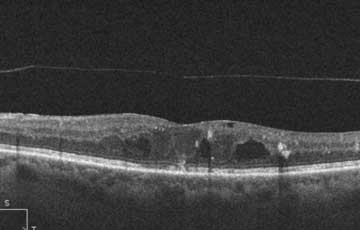 #30. Dark intraretinal circles on OCTArchived
#30. Dark intraretinal circles on OCTArchived -
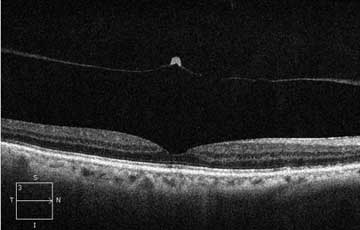 #29. Hyperreflectivity with posterior vitreous detachment (PVD)Archived
#29. Hyperreflectivity with posterior vitreous detachment (PVD)Archived -
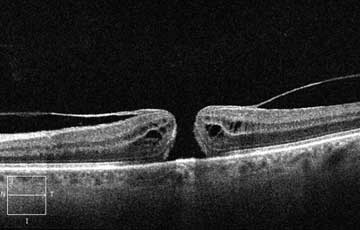 #28. Absence of retinal tissue in foveaArchived
#28. Absence of retinal tissue in foveaArchived -
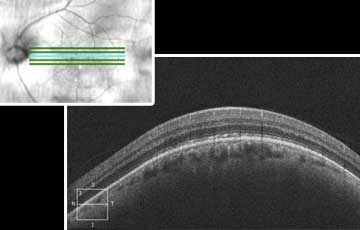 #27. A choroidal elevationArchived
#27. A choroidal elevationArchived -
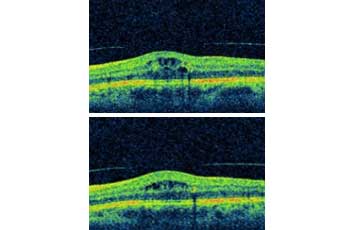 #26. Hyperreflective lesions in an overweight middle aged personArchived
#26. Hyperreflective lesions in an overweight middle aged personArchived -
 #25. SRF with PEDArchived
#25. SRF with PEDArchived -
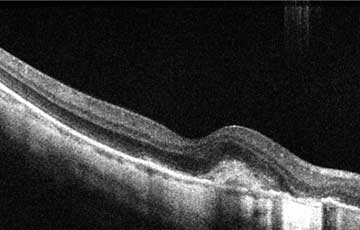 #24. Choroidal neovascular membrane (CNV) with a thin choroidArchived
#24. Choroidal neovascular membrane (CNV) with a thin choroidArchived -
 #23. Hyperintense OCT material is not always exudate or hemorrhageArchived
#23. Hyperintense OCT material is not always exudate or hemorrhageArchived -
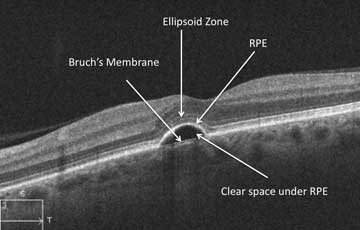 #22. Cystic pigment epithelial detachment (PED)Archived
#22. Cystic pigment epithelial detachment (PED)Archived -
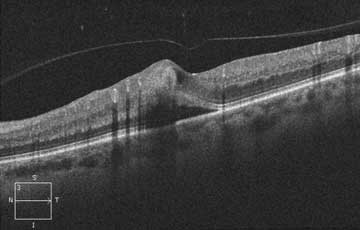 #21. A hyperreflective lesion in the superficial retinaArchived
#21. A hyperreflective lesion in the superficial retinaArchived -
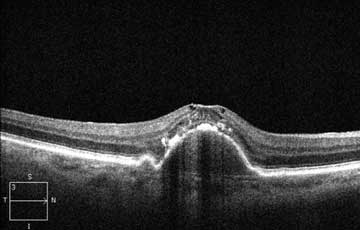 #20. Irregular pigment epithelial detachment (PED)Archived
#20. Irregular pigment epithelial detachment (PED)Archived -
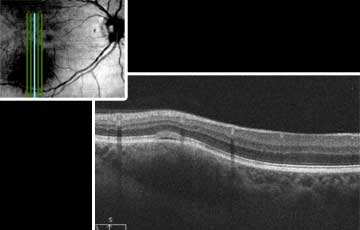 #19. On every OCT look at the choriocapillarisArchived
#19. On every OCT look at the choriocapillarisArchived -
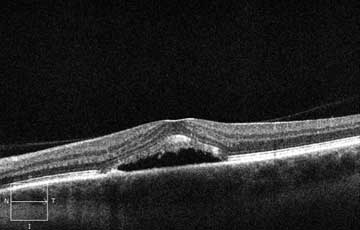 #18. Always look at the choroid in all patients with subretinal fluid (SRF)Archived
#18. Always look at the choroid in all patients with subretinal fluid (SRF)Archived -
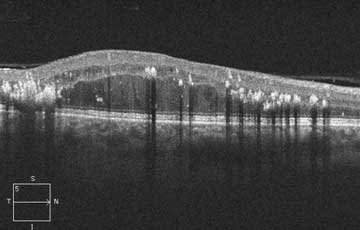 #17. Numerous white spots in the retinaArchived
#17. Numerous white spots in the retinaArchived -
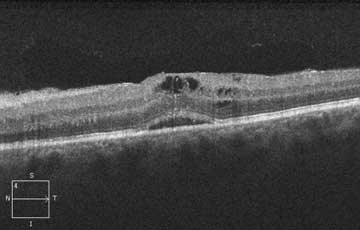 #16. Don't assume that subretinal fluid (SRF) equals wet age-related macular degeneration (AMD)Archived
#16. Don't assume that subretinal fluid (SRF) equals wet age-related macular degeneration (AMD)Archived -
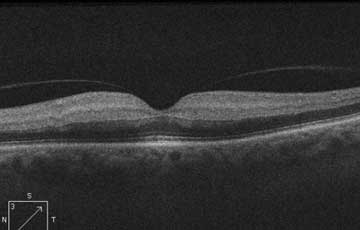 #15. Thickened inner retinaArchived
#15. Thickened inner retinaArchived -
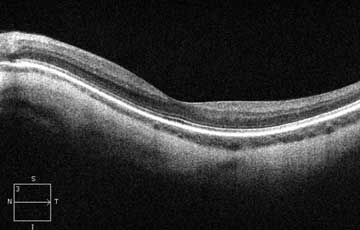 #14. Fluid or normal?Archived
#14. Fluid or normal?Archived -
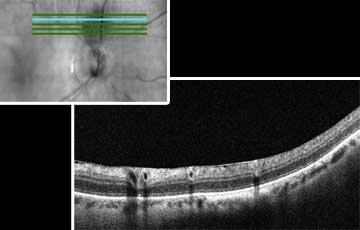 #13. Is hyperreflectivity in retina always abnormal?Archived
#13. Is hyperreflectivity in retina always abnormal?Archived -
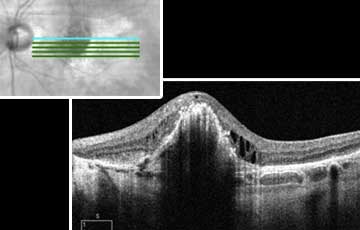 #12. Pigment epithelial detachment (PED) or a rip?Archived
#12. Pigment epithelial detachment (PED) or a rip?Archived -
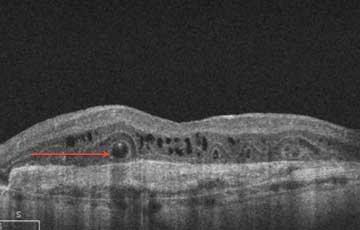 #11. Deep circular rims of hyperreflectivityArchived
#11. Deep circular rims of hyperreflectivityArchived -
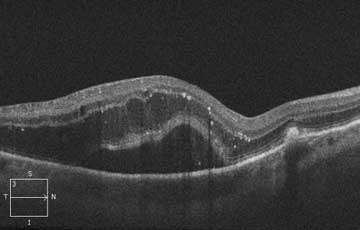 #10. Where does fluid usually accumulate?Archived
#10. Where does fluid usually accumulate?Archived -
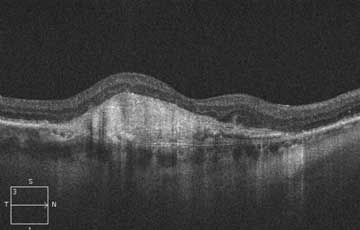 #9. Large white mound under retinaArchived
#9. Large white mound under retinaArchived -
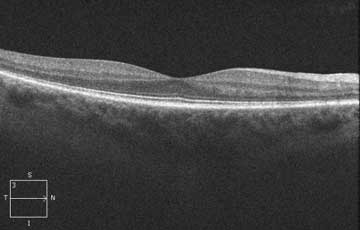 #8. Don't just look at central macular thickness (CMT)!Archived
#8. Don't just look at central macular thickness (CMT)!Archived -
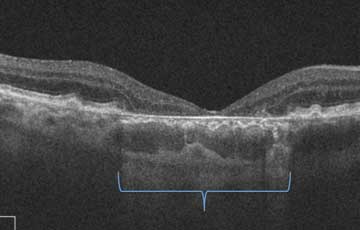 #7. A bright deep band on OCTArchived
#7. A bright deep band on OCTArchived -
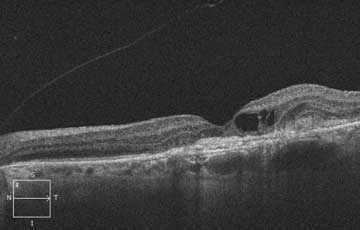 #6. What is subretinal hyper-reflective material (SHRM)Archived
#6. What is subretinal hyper-reflective material (SHRM)Archived -
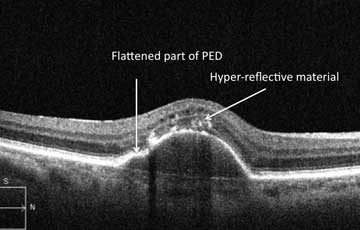 #5. A hyperreflective spot in the retinaArchived
#5. A hyperreflective spot in the retinaArchived -
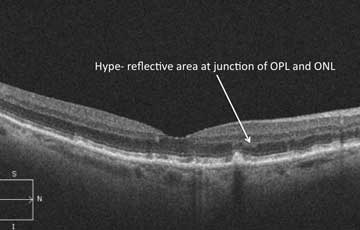 #4. Brightness in the outer plexiform layer (OPL)Archived
#4. Brightness in the outer plexiform layer (OPL)Archived -
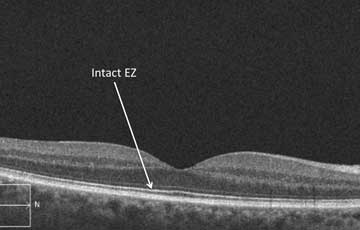 #3. How to predict vision from an OCTArchived
#3. How to predict vision from an OCTArchived